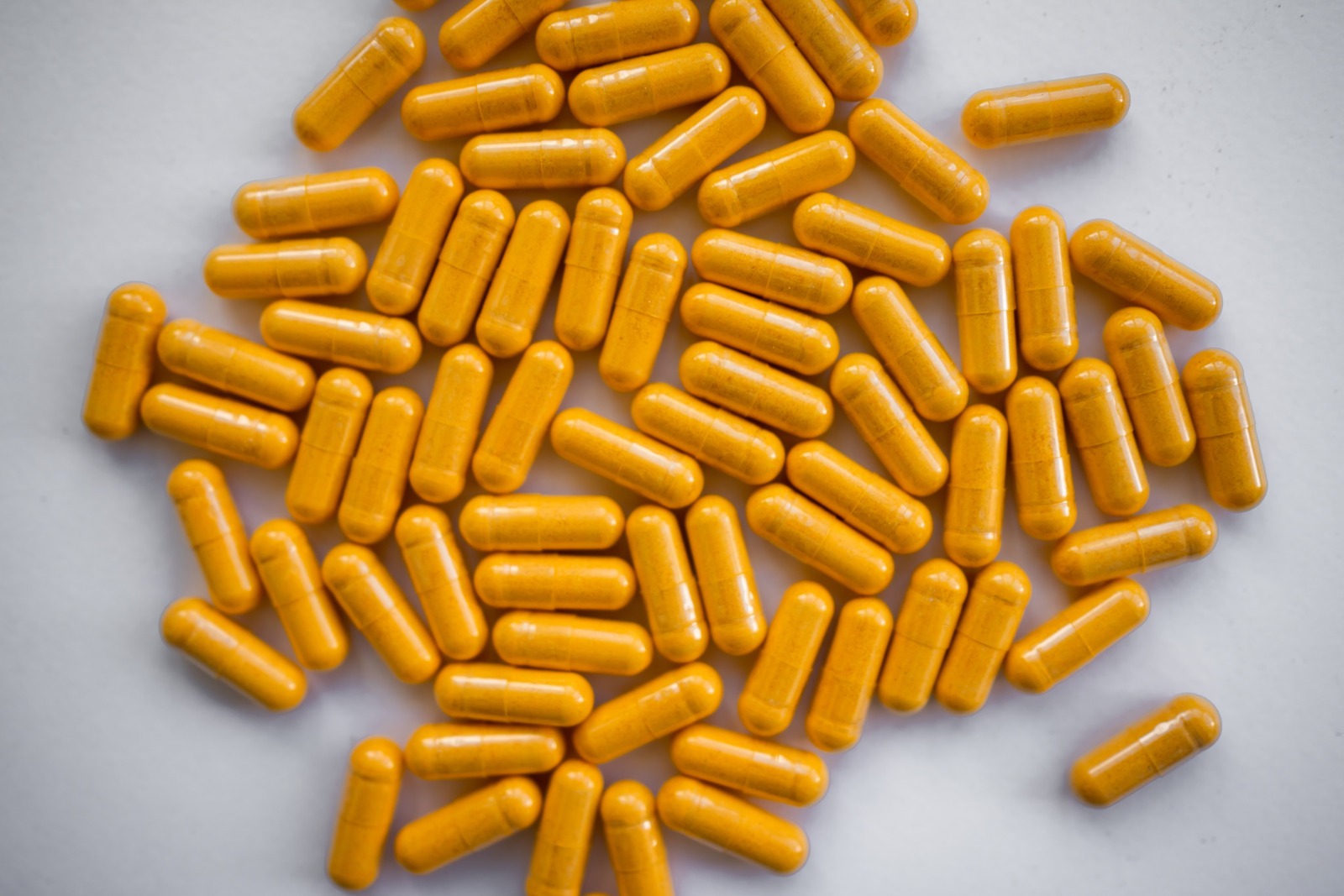Substances | 4 min read
Can You Overdose On Gabapentin? Know The Risks
Medically Reviewed By

On May 27, 2024
Written By
On May 27, 2024

What you will learn
- Gabapentin is an anticonvulsive drug historically viewed as a safe alternative to opioids to treat nerve pain and effective in treating seizures.
- Gabapentin overdose risks increase when combined with opioids, alcohol, or certain other medications and drugs.
- To reduce your overdose risk, review with your healthcare provider ALL medications and drugs you use, including alcohol and over-the-counter medications.
- If you experience any serious side effects from gabapentin, seek medical attention immediately, as it could be life-threatening.
Gabapentin is an anticonvulsant medication used to treat seizures, nerve pain, and other health conditions. While gabapentin is generally considered safe when used as prescribed, there is an increase in overdoses involving gabapentin when mixed with other substances. The risk factors for gabapentin-involved overdoses are linked to when it is used in combination with other drugs, particularly opioids.
If you are taking gabapentin, talk to your doctor about any additional medications you take or recreational drugs you use to reduce your risk of a fatal overdose. As misuse of gabapentin has risen, some states are classifying it as a Schedule V controlled substance.
What is Gabapentin?
Gabapentin is an anticonvulsant medication approved by the Food and Drug Administration to treat seizures in people with epilepsy, the long-term pain some people experience after a shingles attack, and restless leg syndrome. [1] Gabapentin treats seizures by stabilizing electrical activity in the brain. It relieves post-shingles pain by altering how the body senses pain. It is unknown how it treats restless leg syndrome. Gabapentin is sold under the brand names Gralise, Horizant, and Neurontin.
Side Effects of Gabapentin
Common side effects of gabapentin may include: [2]
- drowsiness
- tiredness or weakness
- dizziness and unsteadiness
- headache
- uncontrollable shaking
- double or blurred vision
- anxiety
- memory problems
- strange or unusual thoughts, including suicidal thoughts
- unwanted eye movements
- Nausea, vomiting, heartburn, diarrhea, constipation
- dry mouth
- increased appetite
- weight gain
- swelling of the hands, feet, ankles, or lower legs
- back or joint pain
- fever
- runny nose, sneezing, cough, sore throat, or flu-like symptoms
- ear pain
- red, itchy eyes, swelling or discharge
Serious Side Effects of Gabapentin may include: [3]
- rash
- itching
- swelling of the face, throat, tongue, lips, or eyes
- hoarseness
- difficulty swallowing or breathing
- seizures
- difficulty breathing; bluish-tinged skin, lips, or fingernails; confusion; or extreme sleepiness
Gabapentin Withdrawal Symptoms
Gabapentin should not be stopped abruptly as you can experience withdrawal symptoms such as [4]
- anxiety
- difficulty falling asleep or staying asleep
- nausea
- pain
- sweating
If you are taking gabapentin to treat seizures and you stop taking the medication abruptly, you may experience seizures more often. Your healthcare provider may decrease your dose gradually to reduce the risk of you experiencing withdrawal symptoms.
Can You Overdose on Gabapentin?
Yes, you can overdose on gabapentin. While gabapentin toxicity is rare, it is possible to overdose on gabapentin. Most overdoses that involve gabapentin are a result of mixing gabapentin with an opioid, stimulant, or other drug.
Gabapentin overdose symptoms include: [5]
- Drowsiness
- Fast heartbeat
- Dizziness
- Low blood pressure
- Nausea, vomiting
- Impaired coordination.
- In severe cases, lethargy, coma, and death may occur.
If you suspect you or a loved one is experiencing a gabapentin overdose, you should seek emergency medical care immediately by calling 911. If gabapentin has been taken with other sedative drugs, it can be fatal.
Overdose By The Numbers
Gabapentin prescriptions have been on the rise over the last couple of years, with 69 million gabapentin prescriptions dispensed in the United States in 2019.[6] It is the seventh most prescribed drug in the country. Gabapentin is generally considered safe when used as prescribed and is rarely associated with an overdose on its own.
However, gabapentin can be used to augment the effects of illicit opioids. When paired with other central nervous system depressants such as opioids, there is a risk for respiratory depression, potentially resulting in death.
According to the CDC’s available reporting data (which only includes 24 of the 50 U.S. states), 62,652 overdose deaths occurred during 2019–2020, with 58,362 of those deaths having documented toxicology results. Of those, 5,687 (9.7%) had gabapentin detected on postmortem toxicology results. [7] Nearly 90% of drug overdose deaths in which gabapentin was detected also involved an opioid, most often illicitly manufactured fentanyl.
Gabapentin-involved overdose deaths are likely underreported as it is not included on the regular toxicology panel, and it is also not always included on death certificates, even when it has been identified in postmortem toxicology testing.[8]
These findings highlight the dangers of polysubstance use of gabapentin and illicit opioids. Using these two substances together has an increased risk of respiratory depression and death.
Gabapentin Addiction
Gabapentin has a low potential for addiction, but it can be misused and abused. Gabapentin abuse is on the rise. The FDA does not list gabapentin as a controlled substance, but some states have classified it as a Schedule V drug due to concerns about misuse. The CDC does not recognize gabapentin as an opioid substitute for chronic pain management. However, numerous states are beginning to classify it as a Schedule V drug due to growing concerns about its potential for misuse.[9]
Kentucky was the first state to officially change gabapentin’s classification to Schedule V. A Schedule V designation means that there is a limited possibility for physical or psychological dependence but that there is an abuse possibility. Therefore, the drug should be prescribed with care.
It is possible to become physically dependent on gabapentin, especially if you are using it without a prescription or taking it in a way that was not prescribed by your healthcare provider. Misusing medications can have numerous adverse health consequences. If you believe you or a loved one may be struggling with a gabapentin addiction, there are addiction treatment programs that can help.
Gabapentin Safety Guidelines
Gabapentin is a medication used to treat several health conditions, such as nerve pain, epilepsy, and restless leg syndrome. While gabapentin overdoses are uncommon, it is important to know the symptoms and risk factors of an overdose.
To lower your overdose risk, take gabapentin as prescribed, and do not take it in combination with other medications without first talking with your prescribing healthcare provider. Do not hesitate to seek treatment options if you believe you or a loved one is struggling with a gabapentin or other substance abuse issue.
Frequently Asked Questions About Gabapentin
You should avoid drinking alcohol while you are taking gabapentin.[10] Alcohol is a depressant that can increase the sedative effects of gabapentin. Mixing gabapentin and alcohol can increase drowsiness and dizziness. Before starting gabapentin, talk with your healthcare provider about what medications you are already taking, what your typical alcohol consumption is, and if you have any recreational drug use.
If you forget to take gabapentin, take the missed dose as soon as you remember it. However, if it is almost time for the next dose, skip the missed dose and continue your regular dosing schedule. Do not take a double dose to make up for a missed one.[11]
The following list can cause negative interactions or increased side effects when taken with gabapentin. [12]
- Alcohol
- Narcotic pain medications
- Antihistamine-containing products such as cold, cough, and allergy medicines
- Certain medications for depression, anxiety, or sleep
- Certain medications for seizures
- Certain medications for stomach problems
- General anesthetics, local anesthetics, or muscle relaxants are given before surgery.
Ascendant New York Editorial Guidelines
Here at Ascendant New York, we understand the importance of having access to accurate medical information you can trust, especially when you or a loved one is suffering from addiction. Find out more on our policy.
[1,2,3,4,11] MedlinePlus.gov (2020). Gabapentin. Retrieved from https://medlineplus.gov/druginfo/meds/a694007.html on May 24, 2024.
[5,10] Poison Control (n.d.). Neurontin (Gabapentin): Side Effects, Interactions, and Overdose
Retrieved from https://www.poison.org/articles/neurontin-gabapentin#:~:text=What%20are%20the%20symptoms%20of,coma%2C%20and%20death%20may%20occur on May 24, 2024.
[6,7,8] CDC (2022). Notes from the Field: Trends in Gabapentin Detection and Involvement in Drug Overdose Deaths — 23 States and the District of Columbia, 2019–2020. Retrieved from https://www.cdc.gov/mmwr/volumes/71/wr/mm7119a3.htm on May 24, 2024.
[9] Peckham, A. M., Ananickal, M. J., & Sclar, D. A. (2018). Gabapentin use, abuse, and the US opioid epidemic: the case for reclassification as a controlled substance and the need for pharmacovigilance. Risk Management and Healthcare Policy, 11, 109–116. Retrieved from https://doi.org/10.2147/RMHP.S168504 on May 24, 2024.
[12] Cleveland Clinic (2021) Gabapentin. Retrieved from https://my.clevelandclinic.org/health/drugs/21561-gabapentin on May 24, 2024.




